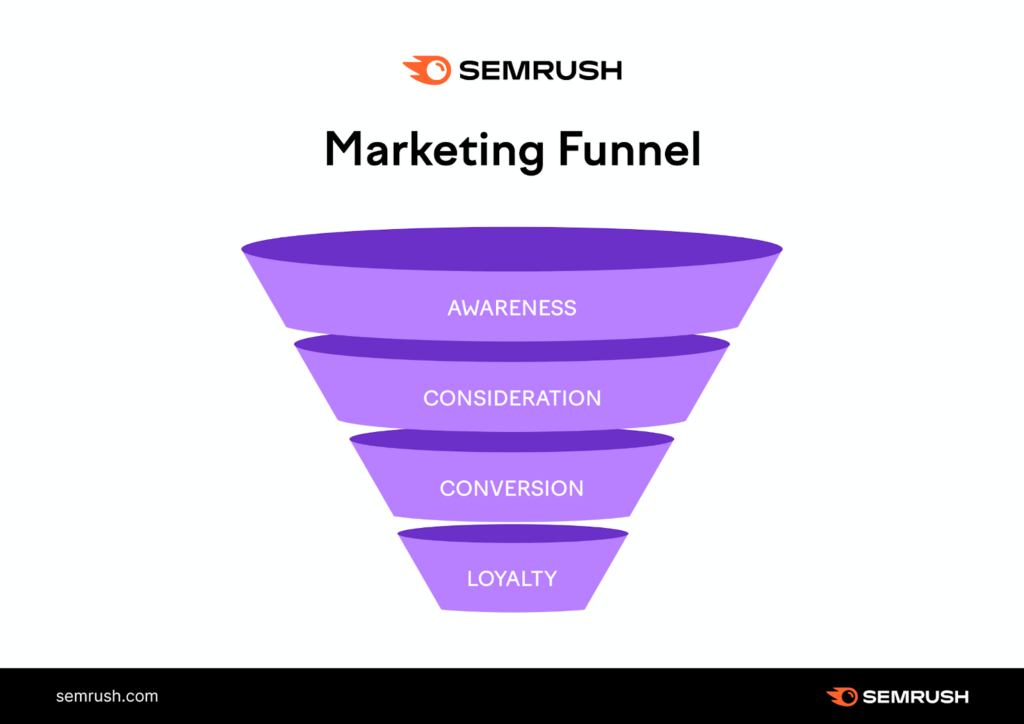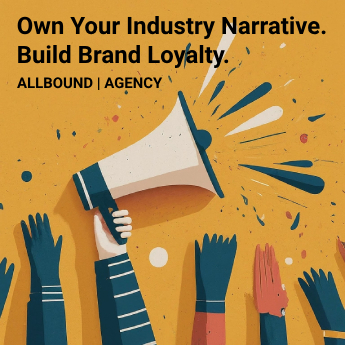Have you ever wondered what path a customer takes from being a complete stranger to your brand to being a loyal advocate? Well, journey with me on an adventure down the rabbit hole of marketing funnels. Get engrossed in a world of attracting, converting, and delighting customers, seasoned with examples from global brand titans. What is a Marketing Funnel? Simply put, it’s a strategic approach businesses use to guide prospective customers through different stages of buying, nudging them from being aware of the product to making a purchase, and beyond, into becoming brand advocates.
Ready to unravel more? Fantastic! We are about to explore the nuts and bolts of marketing funnels, the nuances, the pros and cons, and how industry giants masterfully craft their strategy. Let’s kickstart this learning journey! Dive into this wealth of knowledge and, like Alice in Wonderland, you may discover your marketing world is much bigger (and exciting) than you think.
Defining the Marketing Funnel
The marketing funnel, also known as the purchase funnel, constitutes a strategic framework guiding potential customers through various stages until they become loyal clients. This concept derives from a theory developed in the 19th century, which posits that a potential customer’s journey towards purchasing a product or service follows a predictable and linear route. The traditional funnel model comprises the following key stages:
– Awareness: At this stage, prospects first learn about your product or service.
– Interest: Here, potential customers demonstrate an interest in your offerings and desire to learn more.
– Desire: Prospects now desire your product or service and consider it amongst other options.
– Action: The final stage where your prospects decide to purchase your product or service.

While it may seem overly simplistic, this model has been instrumental in guiding marketers to understand and optimize the customer journey, from generating awareness to the final purchase. However, with the dawn of the digital age, the traditional concept of the marketing funnel has evolved to reflect the increasingly complex customer paths shaped by technology.
In today’s interconnected world, customers now enjoy multiple touchpoints and a variety of platforms to interact with a brand before making a purchase decision. Hence, the marketing funnel has become less linear and more reiterative, influenced by the customer’s unique experiences, preferences, and stages in the buyer’s journey.
Flaws in Traditional Marketing Models
While the traditional marketing funnel has its merits, it’s important to recognize its limitations in today’s dynamic marketing landscape. First, the linear and one-size-fits-all approaches don’t adequately account for the varying buying behaviors and preferences of modern consumers. With multiple touchpoints, from social media to forums and review sites, the customer journey is more nuanced and involves simultaneous processes rather than sequential steps.
Moreover, the conventional funnel models view the customer’s purchase decision as the end point of the journey. However, the modern customer journey extends far beyond the closure of a sale. Maintaining positive post-purchase relationships with customers is invaluable as they could turn into repeat buyers, influencers, and brand advocates.
The limitations of traditional models underscore the necessity for tailored strategies. These should be dynamic and adaptive, catering to multiple touchpoints and diverse customer personas in the digital age.
Real-World Funnel Strategies
Transitioning from theory to practice, there are several key strategies to effectively construct and manage a marketing funnel in real-life scenarios.
Firstly, it’s critical to design evergreen funnels. These are marketing strategy assets which, once created, generate leads, and drive conversions regularly, with minor tweaking. Evergreen funnels capitalize on the consistent value your product or service offers, independent of trends or time, and tend to have an extended life-cycle compared to campaign-specific funnels.
Next, understanding your audience’s behavior is crucial. Acknowledge the multiple channels your customers may use, their preferences, the most effective points of contact, and design your funnel reflecting these insights. Tools for tracking website visits, social media interactions, and email responses are invaluable for this purpose.
Finally, to attract customers into your funnel, create compelling lead magnets. These are offers such as ebooks, webinars, free samples, or discount codes, which entice potential customers into giving their contact information for further engagement.
According to Metranomic, “From the age-old models that first defined customer journeys to the innovative strategies employed by today’s global giants and niche players, the marketing funnel has undergone significant evolution.”
## Harnessing the Power of Trust and Storytelling
Ever wondered how colossal brands like Airbnb and Nike have managed to create some of the world’s most incredible marketing funnels? It all boils down to two vital elements: trust and storytelling.
As consumers, we tradionally buy from businesses we trust, and we build this trust when we identify and connect on a deep emotional level. For global brands, establishing trust isn’t merely an alternative strategy – it’s a prerequisite. Airbnb’s phenomenal success can be attributed to the trust it built with its customers by sharing genuine host stories. Similarly, Nike inspires its audience by sharing stories of ordinary people accomplishing extraordinary feats. Through storytelling, they create an emotional bond, fostering trust and motivating customers to move down the purchasing funnel.

SaaS Marketing Funnel Techniques
In the Software as a Service (SaaS) industry, the marketing funnel is a indispensable tool, often requiring tailored strategies. This heavily involves utilizing market research insights to understand buyers, strategic use of free trials to peak interest, and implementing retargeting campaigns to nudge potential customers towards making a purchase.
These strategies are critical in achieving core objectives of customer acquisition, lead nurturing, and boosts in conversion rates.
For example, Dropbox sequentially applies marketing principles within its funnel, starting with awareness (free trial) and culminating into conversion (paid service). On the other hand, Evernote offers a freemium model, using upselling techniques to convert free users into premium ones (autogrow.co).
Sales Funnel vs. Flywheel Analysis
While traditional sales funnels focus on capturing leads and driving them to make a purchase, the newer concept of the “Flywheel” emphasizes customer retention and repeat purchases.
Imagine a spinning wheel – the more force (effort) you apply, the faster it turns. This wheel represents your business. Each customer play a crucial part in maintaining this momentum, turning the wheel faster overtime with repeat purchases and referrals to others.
Amazon is one prime example of a business that has transitioned from a traditional sales funnel to a customer-centric flywheel. This technique motivates their customers to keep returning and purchasing more, thereby fueling the business’s growth and sustainability.
It’s important to note that while flywheel models are becoming increasingly popular, they may not be appropriate for all businesses. It boils down to understanding your unique business goals, audience, and growth strategies.
Frameworks for Funnel Optimization
There are time-tested strategies and frameworks that work like magic when crafting your marketing funnel. Some of the major models that have continuously delivered outstanding results are the AIDA, SEETHINKDOCARE, and BOFU MOFU TOFU methodologies.
The AIDA model, an acronym for Awareness, Interest, Desire, and Action, is a simple but powerful concept that takes the customer on a journey from discovering your company or product to making a purchase decision. Developing tailored strategies around these stages can lead to impressive conversion rates.
SEETHINKDOCARE is a slightly more complex model, but it offers tremendous value in understanding customer behaviour and constructing targeted campaigns. It emphasises respecting the customer’s “see” phase (discovering and exploring), “think” phase (consideration and evaluation), “do” phase (action and decision), and “care” phase (post-purchase satisfaction and loyalty).
As for BOFU MOFU TOFU, these are stages that a prospect passes through in the funnel – the top of the funnel (TOFU), middle of the funnel (MOFU), and bottom of the funnel (BOFU). Each stage represents a different area of focus and requires a unique approach.

By employing these frameworks, marketers can create targeted campaigns that meet potential customers at every phase of their buying journey, thereby increasing the odds of conversion.
Upselling and Cross-Selling within the Funnel
A powerful tool at your disposal to increase revenue and enhance customer experience is the strategic implementation of upselling and cross-selling. Upselling involves convincing customers to purchase a higher-end product or add-on features, while cross-selling encourages the purchase of related or complementary products.
For example, think about Amazon’s “Frequently bought together” section strategically placed to encourage customers to add more items to their cart. It enhances the customer experience by suggesting relevant products and helps Amazon boost its total sales.
Leveraging Analytics for Funnel Optimization
The use of analytics cannot be overstressed in modern-day marketing. In regards to the marketing funnel, analytics and measurement tools are used to refine the marketing funnel and drive actionable insights for business growth. By tracking various metrics like user behaviour, demographics, engagement rates, conversion rates, and more, marketers can fine-tune their strategies, targeting potential customers with more precision.
According to a report on Mastering Marketing Funnel Automation Strategies for Success, in the SaaS realm, particularly, there’s an ongoing evolution that requires marketing strategies to be continuously enhanced and analytics plays a vital role in supporting this evolution.
Conclusion
In conclusion, optimizing and fine-tuning your marketing funnel is a constant process. By employing the right strategies and frameworks, leveraging analytics, and implementing upselling and cross-selling, businesses can ensure that their marketing funnels are performing to their maximum potential. However, remember, the marketing landscape is continuously changing, and so should your marketing strategies.
Frequently Asked Questions
What does AIDA stand for?
AIDA stands for Awareness, Interest, Desire, and Action. It’s a marketing model that guides potential customers through these four stages, from when they first become aware of a product or service to when they decide to buy.
What is the SEETHINKDOCARE model?
The SEETHINKDOCARE model is a customer-centric marketing framework that divides the customer’s journey into four phases: See (Awareness), Think (Consideration), Do (Purchase), and Care (Retention). The objective is to design strategies that meet the customer’s needs at each of these stages.
What does BOFU, MOFU, and TOFU represent in marketing strategies?
BOFU, MOFU, and TOFU stand for Bottom of the Funnel, Middle of the Funnel, and Top of the Funnel respectively. These represent stages in the customer journey. TOFU involves attracting prospects, MOFU focuses on nurturing relationships with these prospective customers, while BOFU targets converting them into paying clients.
How does cross-selling differ from upselling?
Cross-selling encourages customers to buy related or complementary products, thereby increasing the total revenue per customer. In contrast, upselling encourages customers to buy more expensive items or upgrades.
What role do analytics play in boosting the effectiveness of a marketing funnel?
Analytics help measure and understand user behavior, demographic details, engagement and conversion rates, and more. Through data analysis, marketers can modify their strategies to target potential customers more accurately, thereby enhancing the effectiveness of the marketing funnel.

